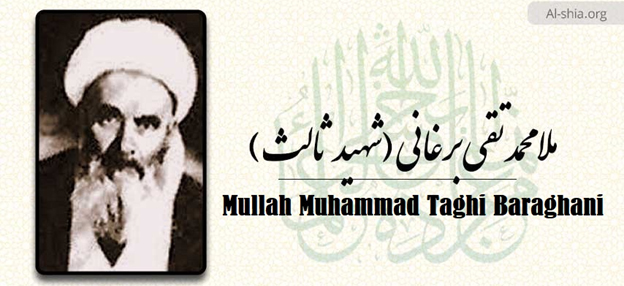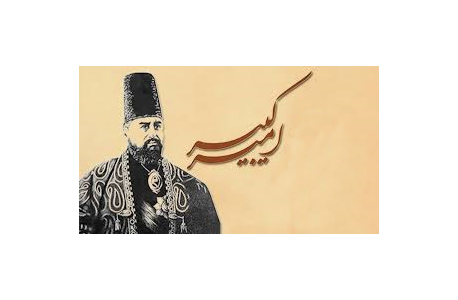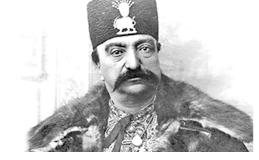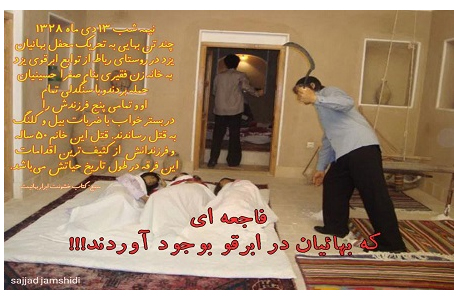After the victory of the Islamic Revolution, the Baha’is have been continuously in the domain of human rights of one of the proselytizing topics of the universal arrogance. Meantime, surrender and deviation of the Bahaism organization are clear for everybody today. Nevertheless, the violent and terroristic activities of this Colonial party haven’t been investigated very much.
Psychologists are dividing cults into two groups:
The first group is the one which is acting based on intermittent and fleeting arms of its head and is to some extent careless about out of the cult community.
The second group includes the cults whose heads are seeking for dominance on the world. In these cults, there are two consistent and my important principles which are as follows:
- The aim justifies the tool.
- They are higher than each rule.[1]
This group considers each behavior as justifiable and this approach makes them really dangerous (cults). One of these cults is Babism cult from which Bahaism has been originated. On the other hand, Babism is a cult originated from the colonial tricks to destroy religion.
Based on these principles, Ali Muhammad Shirazi (known as Bab)-who was a cracked-brained and seditious and mentally deficient person[2] – was intrigued by Mullah Hussein Boshrouyee who was one of the members of the British intelligent service[3] and of the pupils of Seyyed Kazem Rashti[4] claimed for being the gate for Imam of the Time(P.H.) and being the deputy of him. A year later, he claimed for being Imam of Time (P.H.) himself. He could gather some followers around himself. The followers of Ali Muhammad Shirazi can be classified as follows:
- The deviant people and power seekers
- Profiteers and scammers
- Naive people
Three years after claiming for being Imam of the Time by Ali Muhammad Shirazi, the Babis created several riots in Iran: Mazandaran riots headed by Hussein Boshrouyee and Muhammad Ali Barforoush (known as Qoddous), Tabriz riots headed by Seyyed Yahya Daraee Kashfi and Zanjan seditions headed by Muhammad Ali Zanjani (entitled Hojjat). At the same time with Zanjan riot, a group of people headed by Ali Torshizi in Tehran city was going to kill Naser Al-Din Shah along with Amir the great and leader of Friday prayer of the city. Their plan was revealed. 28 people of the Babis eat were captured out of which seven Babis were killed.[5]
The Babis also attacked a village near Tabarsi fort aiming gathering supplies and massacred 130 villagers.
Another group of Babis attacked a village called “Afra” and killed all the residents of the village including kids and usurped the village.[6] Also, two people called major Ismaeel and miner Ismaeel who were ex-Babis and had turned against this creed were arrested by the Babi rioters and were Killed violently.

In 1266 A.H. along with the Babi riot in Zanjan and Bastam and massacring thousands of sinless Muslims, Amir the great issued the execution commandment of Ali Muhammad Shirazi. After Ali Muhammad’s death, one of the followers of him called Hussein Ali Nouri claimed for being the successor of Ali Muhammad Shirazi without any religious belief.
At his period of time, the most important murder was the terrible killing of Ayatollah Haj Mullah Muhammad Taghi Baraghani.[7]
In 1264 (A.H.), at midnight when he was praying in the mosque, some Babis entered into the mosque and injured him with spear and sword. He was martyred after two days. The murderer was Mirza Saleh Shirazi entitled Mullah Abdullah Babi.[8]

The Political Murders:
Planning for killing Amir the great:
In 1268 A.H., Mirza Taghi Khan Amir the great was dismissed and Mirza Agha Khan Nouri, the British worker and Hussein Ali Nouri’s old friend became the chancellor. In this way, Agha Khan Nouri flaunted for 7 years which ended in Amis’s murder in Fin bath, Kashan city. According to many historian, Babis trace can be observed in the planning of Ami’s murder. Also; due to firm campaign against Baha’is by Amir the great, Abbas Effendi (Hussein Ali’s son) insulted him and called him as an unexperienced and superficial person.[9]

Aborted assassination of Naser al-Din Shah with the trick and plan of Hussein Ali Nouri :
Ezziyeh, Hussein Ali Nouri’s sister reveals planning and executing the assassination mentioning the names of agents. She writes: “First, Mirza elected Karim Khan (a famous Babi) and gave him 50 Tumans along with his horse and sword. He also promised Karim Khan to appoint him as chancellor, but he received money and the horse and escaped to Istanbul.”
After that, Mirza hired a young Babi person called Muhammad Sadegh Tabrizi. After the failure of assassination plan, nearly 80 Babis were killed and Hussein Ali rejected his action! Ezziyeh concluded and addressed Abbas Effendi and said: “This was the first seed of sedition and disunity planted by your father. After the sedition, he denied and made others guilty.”[۱۰]

Ayatollah Sheikh Fadhlullah Nouri’s murder during the Constitution revolution movement:
Asad Allah Khan Abul Fath Zadeh (Brigadier General of the Cossack Regiment) along with Mosta’an-al-Molk and Mirza Nejat Khorasani[11] were of the members of “the revolutionary court”. In 1337 A.H., they issued the commandment of execution of Sheikh Fadhl Allah Nouri. The prosecutor of the case was Sheikh Ibraham Zanjani who was influenced by a Baha’i person’s inductions, Mirza Mehdi khan Ghaffari (the minister).[12]

Seyyed Abdullah Behbahani’s murder:
The agents of this assassination were of the dependents of terroristic band of Baha’i Abul Fath Zadeh and Monshi Zadeh. One of the assailants was a Baha’i person called Hussein Allah who later on cooperated with Abul Fath Zadeh, Meshkat al-Mamalek and Monshi Zadeh in the punishment committee.[13]
Killing some Muslim people whose existence were harmful for Bahaism?
* Hajj Sheikh Zakarya Ansari Darabi entitled Nasir-al Islam:
He fought against the British Colonialism ordered by Hajj Seyyed Abdul Hussein Mojtahed Lari (P.H.)
* Muhammad Fakhkhar:
Muhammad Fakhkhar’s murder is of the assassinations ordered by the Baha’i assembly of Yazd city. He had insulted Bahaism, as if. He was killed and his dead body was burnt. The direct agent of the murder was a person called Soltan Nik Aeen who was arrested after a while.[14]
*Abarghou crime:
In one of the villages nearby Abarghou called Robat, a monotheist lady called Soghra was living along with her young offspring. Abbas Ali Pour Mahdi, a Baha’i proselytizer considered her existence as a barrier against Bahaism organization. He sent several reports to Yard assembly and convinced the assembly to issue the order for killing this lady and her offspring. In this way, this 6-people family were terribly murdered by a Baha’i person to called Muhammad Ali Shirwani at the night of Day, 13, 1328.
This ruthless murderer rushed this woman’s house along with several other people and first mangled her three daughters with shovel and ax and then dismembered her and her two young sons.[15]

Killing the young Babis who opposed the system of Mirza Hussein Ali Nouri (mainly the Azalis):
Abdul Hussein Ayati says in this regard:” It is about the murders of Azalis resided in Acre by the Baha’i terrorists. They were five people who were assassinated two times. Two people were killed by master Muhammad Ali Salmani and one or two other one(s) were secretly killed. They were killed because they had insulted Baha’s brother called Kalim… The next time, that assassination agent attacked and killed three other people at noun in their houses. They were Seyyed Muhammad Isfahani, Reza Gholi Tafreshi and Mahmoud Khan Kaj Kolah who had revealed the Baha’is secrets. Abbas Effendi himself was accompanied by them in this proposition. Baha and Abdul Baha were imprisoned for a week.[16]
Killing the Baha’is who were aware some secrets whose continuation of lives was dangerous:
* Mirza Asadullah Dayyan’s murder is the most known one in this regard. He was the author of the book “Bayan” and other writings of Ali Muhammad Shirazi. Hoe was of “Horouf-e-Hayy” who were aware of the secrets of Babism emergence. He was killed ordered by Hussein Ali Nouri.
Killing nullah Rajab Ali Ghahir[17], Ali Muhammad’s brother-in-law
All these documents are indicating this reality that the heads of the deviant cult of Bahaism were hired laborers who were killing innocent and ordinary people to gain power. They were committing all kinds of crimes.
Babism and Bahaism can be assumed as terroristic cults and are considered as one of the greatest assassination band in the Iranian contemporary history.
[۱] Margaret Singer, cult in our midst, university of Isfahan publishing house, 1st edition, 1388 S.H., p. 260.
[۲]Etezad-al-Saltaneh, Bab’s sedition, Elm publication, p. 260.
[۳] The documents of Edward Colony’s book, the officer of the British intelligent service
[۴] Seyyed Kazem Rashti, the pupil and successor of 3 Sheikh Ahmad Ehsaee, the founder of Sheikism (1205-1259 A.H.)
[۵] Mehdi Moshtaghi, Bahaism in the passage of history, Al-Tayyar publication, 1st edition, 1389, p. 272.
[۶] Ezzedin Reza Nejad, from Sheikism to Babism, the publishing house of the foundation of Imam Mahdi’s (P.H.) culture.
[۷] E’tezad-al-Sataneh, ibid, p. 128.
[۸] Kawakeb-al-Dorriyah, Al-Arabiyah publishing house, Egypt, p. 207.
[۹] Mehdi Moshtaghi, Bahaism in the passage of history, Al-Tayyar publishing house, 1st edition, 1389, pp. 198-199
[۱۰] Ezziyeh Khanom, Tanbihunnaemin, p. 5-6.
[۱۱] Keyhan institute, Bahaism penumbra, vol.25.
[۱۲] Abdullah Shahbazi, the Iranian contemporary history periodical, No. 27, pp. 25 & 26.
[۱۳] Ibid.
[۱۴] Ibid.
[۱۵] Hussein Khorasani, Bahaism disasters or Abargou event, 26.
[۱۶] Abdul Hussein Ayati, Kashful Hiyal, vol. 1, Rah-e-Nikan publishing house, 1st edition, 1389, p.104.
[۱۷] Mirza Agha Khan Kermani, Hasht Behesht epistle.






